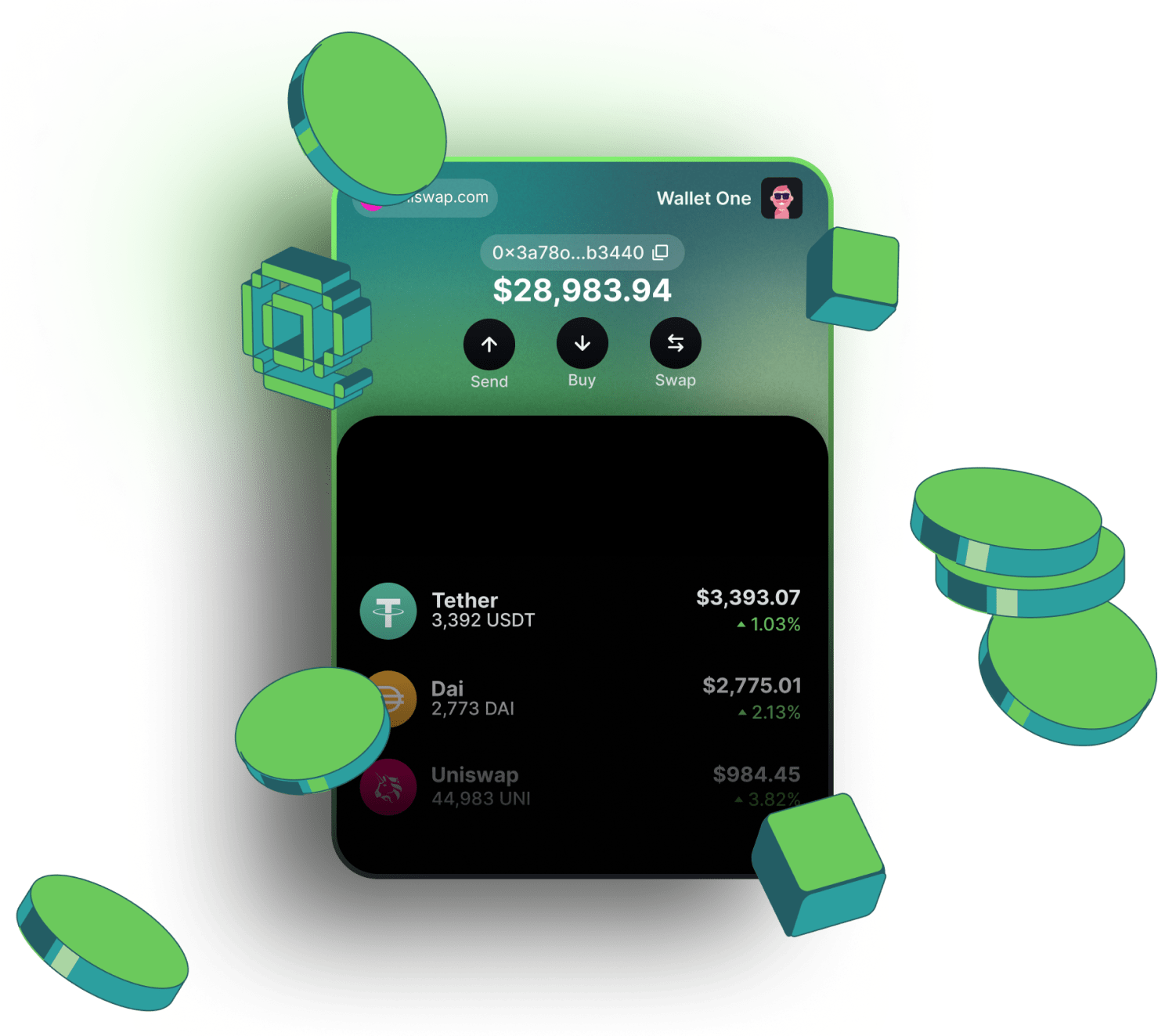Wigwam is the best  Acala blockchain crypto wallet
Acala blockchain crypto wallet

Why choose the Wigwam crypto app?
Work with Acala Testnets and Mainet
Buy Acala tokens, including native token, by using a credit card
Swap Acala-based tokens directly in the wallet
Possibility to connect the wallet to all Acala blockchain dAps: DeFi, DAO, Gamings, etc
How to get a Acala address in Wigwam web wallet
Create a wallet in Wigwam
Choose a Acala network from the dropdown menu
Copy you Acala address
Acala Blockchain Review
Acala is a high-performance blockchain designed as a hub for decentralized finance (DeFi) applications and operates as a Polkadot parachain with robust security measures. Also, the Acala blockchain is EVM-compatible, enabling developers to deploy smart contracts and Ethereum-based dApps into its network.
Origin and vision
Polkadot’s Relay Chain facilitates seamless communication and information sharing among different blockchains. Therefore, to create a user-friendly DeFi ecosystem and develop decentralized financial markets across these chains, two Polkadot developer groups, Polkawallet and Laminar, created the Acala Foundation. They officially launched the Acala blockchain in December 2021.
Key milestones
In November 2021, over 81,000 community members committed more than 32 million DOT tokens worth over $1.28 billion to Acala’s network as loans to be repaid with incentives in ACA tokens. With this milestone, the network secured the first parachain auction on Polkadot, leading to its official launch the following month.
Two years later, the community-driven project had amassed over 179,000 account holders, and the chain’s Total Value Locked (TVL) was worth over $139 million.
What consensus algorithm does Acala blockchain use?
Acala uses the nominated proof-of-stake (NPoS) consensus algorithm to validate transactions and secure its network. It achieves consensus through validator nodes chosen and appointed by stakers. In NPoS, token holders become validators who create new blocks and confirm transactions based on the number of coins they stake as collateral. Also, this ecosystem rewards users with new ACA cryptocurrency tokens for successful block creation and validation.
How Acala technically solved problems with scalability, decentralization, and speed
The Acala blockchain provides technical solutions to the challenges related to decentralization, scalability, and speed using the nominated proof-of-stake consensus algorithm. It scales the chain by sharing workload among blockchains and letting many parachains process transactions concurrently. It reduces congestion on the network and ensures speedy performance.
Also, the mechanism decentralizes the network by adopting an open governance system where community members participate in the platform’s decision-making.
The main players in the Acala Blockchain:
The prominent roles in the Acala blockchain include the following:
- The developers who create and test diverse applications
- Nominators
- Validator nodes.
DeFi ecosystem on Acala
Acala DeFi offers aUSD, a multi-collateral stablecoin for users to perform cost-efficient network transactions. Furthermore, users can stake L-DOT or Liquid DOT tokens to participate in liquidity pools and earn rewards. Also, this chain features a DEX for the smooth trading of digital assets. It’s supported by an automated market maker (AMM). To work with the Acala blockchain you may use the Wigwam Web3 extension.
Acala NFTs Marketplaces
Acala NFTs marketplaces allow digital artists to easily create, buy, and sell imaginative artworks without third parties. Unique and RMRK are non-fungible token spaces with opportunities for creative exploration.
Visit RMRK to create and trade artworks effortlessly. Also, Unique provides users with the features to produce one-of-a-kind digital art. To join the Acala NFT ecosystem, we advice using the Wigwam wallet.
Tokenomics and Gas Usage on Acala
ACA is the native token and gas fee of the Acala blockchain. The use cases are as follows:
Low Transaction Fee: Users execute transactions on the network and pay fees in ACA tokens.
Staking: Users stake ACA coins on the network to become validators
Governance: Users stake ACA tokens, vote on governance proposals, and elect council members.
Conclusion
Acala is a blockchain solution designed with tools for developers to create cutting-edge dApps and financial applications. It's compatible with smart contracts and supports the latest decentralized finance features.
FAQ
Users pay gas fees on this blockchain using ACA tokens.
Many blockchain explorers allow users to check wallet activities in Acala. Popular examples with easy-to-use interfaces include Subscan and Acala Chain Explorer.
Users can view the chain status and block and transfer information with only a few clicks on Subscan.
The Acala Chain Explorer lets users check average block time and transaction history information.
Various crypto wallets are compatible with this blockchain, and below are a few:
- Wigwam Web3 wallet
- Enkrypt Wallet
- Talisman Wallet
- MetaMask Wallet.
Visit the MetaMask website and download the application. Install and launch it in your browser and create a wallet as a new user, or log in with your password. Click on the three dots in the top-right corner to expand the view and select Add Network. Then, input the network name, RPC, block explorer URL, chain ID, and currency symbol details. Click save, and you can explore the Acala wallet.
Look no further than the liquid decentralized finance, non-fungible token, and gaming sector for popular projects.
DEX users can explore Acala Swap and those staking coins for rewards should look towards Acala LCDOT. Goodgame Nation is for gaming enthusiasts while the Unique Network is for non-fungible token digital creators.





